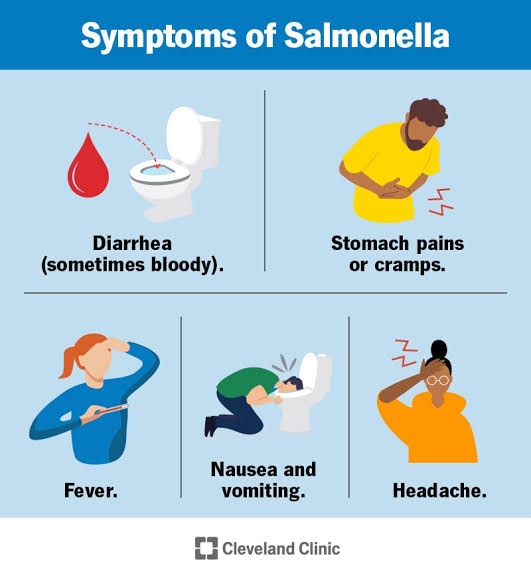Foods contaminated with salmonella pose a threat to human health
There are more than 2,000 species of salmonella, including many diseases such as typhoid fever and paratyphoid. The disease begins with poisoning through food, drink, and transmission from animals. This poisoning is caused by two types of bacteria: Salmonella Enteritidis and Salmonella Typhimurium. It is spread in poultry, cows, pets, non-pets, and rodents. These bacteria multiply rapidly in food and often lead to severe symptoms.
Some people believe – incorrectly – that poisoning occurs after eating contaminated food. The truth is that it takes a number of hours. In salmonella poisoning, for example, poisoning occurs after eating food containing this bacteria within 12 to 36 hours, after which symptoms appear on the infected person, including diarrhea and abdominal pain. Chills, fever, vomiting, dehydration, loss of appetite, and headache last for several days, and sometimes lead to death. Continuing diarrhea leads to dehydration, which is why the patient must be treated as soon as he feels colic, especially children and the elderly.
Methods of transmission of the disease:
1- Drink milk without boiling it.
2- Eating meat without adequate cooking or eating it half cooked (if it is contaminated with bacteria, meaning it comes from infected animals).
3- Not washing vegetables well
4- Not washing hands before preparing food or before eating.
5- Eating raw eggs.
Among the foods that most transmit the disease are shawarma, raw eggs, and mayonnaise, and this happens if health conditions are not observed in examining the poultry used in preparing shawarma, as well as purchasing eggs from infected farms.
To avoid contamination with salmonella, the following is recommended:
1- Follow the health conditions for workers in restaurants and follow up on them by the competent authorities
2- Do not touch the nose, mouth or hair while working. They must be completely covered with a suitable cover
3- Pay attention to the cleanliness of meat processing and cutting tools, and cooking and food serving tools
4- Adequate cooking of foods, especially meat and eggs
5- Follow up on the cleanliness of workers in kitchens, restaurants and slaughterhouses
6- Proper storage of foods at an appropriate temperature
7- Pay greater attention to food cooked from the previous day and store it in the refrigerator in the proper manner

